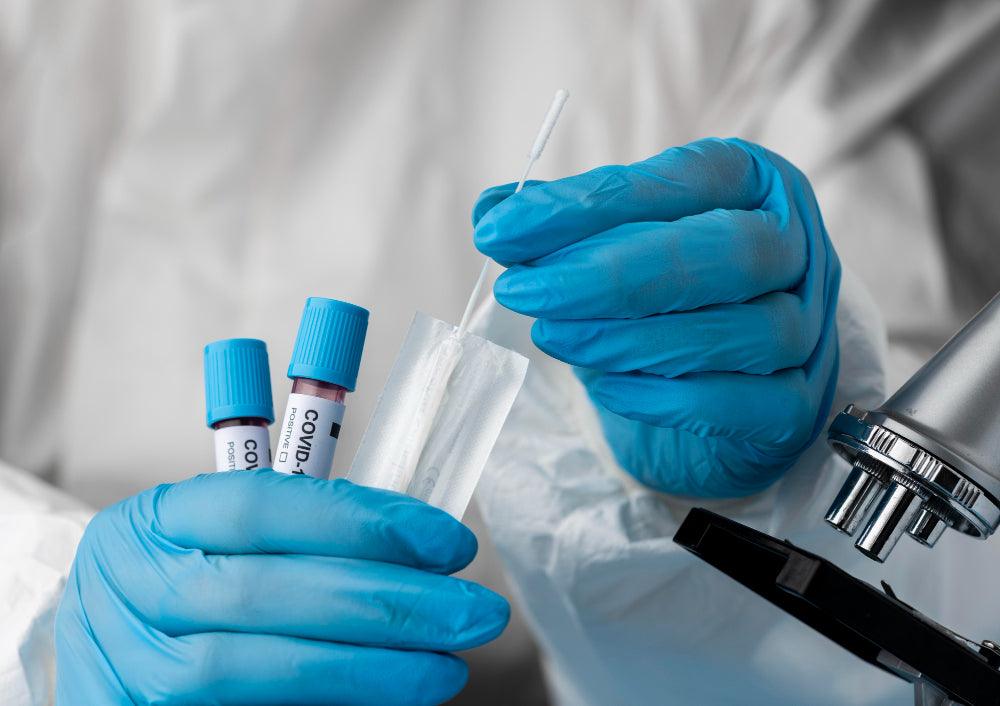Difference between Delta, Omicron and Deltacron


The emergence of new variants has become a global health challenge.
The global pandemics of different infectious diseases have killed millions of people throughout history. The recent coronavirus pandemic has produced shock waves that are still resonating throughout the globe. It was the first pandemic experienced in the 21st century.
The COVID-19 pandemic reached the UK in early 2020. So far, more than 22 million people have been infected, and the death toll is approaching two hundred thousand. The severe illness associated with this virus and its rapid spread forced the global authorities to adopt strict control measures to slow down the spread of the virus.
As the first wave of the disease began to fade away in the late summer of 2020, several new variants, e.g., Delta, Omicron, and other variants, began to emerge worldwide, causing more pandemic waves. What are the viral variants? What are their different types? Why do these variants occur? What are the disease features caused by three main variants found in the UK? These are some of the questions that may arise in your mind. Stay on the page for the answers.
If you are more interested in an overview of COVID-19, then read our comprehensive guide written by DR. Williams, which includes symptoms, causes and testing for COVID-19.
The viruses must fight a continuous battle against your immune system and environmental factors. Under the influence of these factors, the virus has to change itself. These changed forms of the same virus are known as ‘variants'. A variant usually develops in a region and then spreads to other regions. These are, thus, the ‘mutated viruses.’
But exactly how do new variants emerge? The virologists have noted the following reasons that may pinpoint some logical deductions.
The World Health Organization (WHO), the National Institute of Health (NIH) and other public health departments are constantly examining these other variants of coronavirus. Whenever a new variant is found, scientists classify it into one of the following four categories;
These are the variants that do not pose any serious public health risk but are being monitored for any possible future risks.
These variants have not spread, but their features predict that they would cause a severe illness. These variants are monitored under the global pandemic control program.
These variants have a considerable mutation in their spike protein which increases their affinity for human cells and thus, they have a very rapid spread. The most common variants, e.g., Alpha, Beta, Gamma, Delta and Omicron and Deltacron, fall in this category.
These are the variants against which the currently available vaccines do not give immunity. To date, none of the covid-19 variants falls in this category.
Let's briefly overview three Sars-Cov-2 variants of concern, i.e., Delta, Omicron and Deltacron.
This variant was detected in India in the fall of 2020. Due to its extensive spread, it has been reported in 176 countries worldwide. It had replaced the pre-existing variants in the regions with an endemic to become the dominant variant. This variant was the cause of a devastating second wave that affected the world, particularly India.
Obviously, different mutations in the original virus are responsible. What were the mutations in the original virus that produced the Delta virus? Various modifications in the virus have been identified to form the Delta virus.
These mutations are;
This mutation increases the virus's infectivity and increases its ability to avoid the immune cells.
This mutation is responsible for its ability to cause severe disease.
This mutation helps the virus to evade the body's immune system by making them unrecognisable by the body cells.
This mutation was the first discovered mutation to be discovered in the virus. Its role is still unclear.
It was for the first time identified in Nepal. In addition to the mutations mentioned above, it also had a K417N mutation.
Its emergence in the summer of 2021 marked a renewed wave of disease. It has a more rapid spread than the previous viruses, and shock and awe in the general populace were pronounced.
The Omicron variant was identified in the early winter of 2021 as the Delta wave was fading. It was discovered when the local authorities of Gauteng province of South Africa reported an abrupt increase in COVID-19 cases to the WHO.
An omicron infection was confirmed by a patient in November 2021. As of today, it has spread to 128 Localities and countries in South America, North America, Australia, Europe, Asia and Africa, causing a severe Omicron wave. The two most common Omicron variants are BA.1 and BA.2. UK health security agency has been monitoring the genetic sequencing of Omicron lineages.
So, what mutations in the original virus have produced the Omicron?
Like the Delta virus, several mutations in the original virus have produced different omicrons. The modifications are mostly found in the spike gene. These mutations are;
A large number (more than 60) of mutations have also been found, which are yet to be characterised.
The features of omicron variant disease are;
Within a variant are further sub-variants as preliminary data suggested. In March 2022, a combination of delta (AY.4) and Omicron (BA.1) was discovered in France. It gained the reputation of "Deltacron". But how could such a variant emerge?
A recombinant variant emerges when the same person is infected by more than one variant of the same virus. In this way, different viruses get the opportunity to live together and exchange genes with each other. These chances are high for coronavirus due to its genomic nature and the speed of spread.
Very scarce information is available, and investigations are underway. The data published by the Centre for Disease Control and Prevention in China has shown that it is more similar to its Delta parent (AY.4). Among a total of 36 mutations identified, only five were found in the AY.4, while 27 were found in the BA.1. The rest of the mutations were found in both of the viruses.
According to reports by prominent scientists around the world, it is not the only recombinant event to be identified; in fact, at least three different omicrons have been identified. The symptoms of this variant are not yet clear and resemble the symptoms caused by the previous strains.

As the virus spreads to various regions and populations, it changes its genes, and new variants are produced.
These variants have different pathogenicity and cause different types of diseases. Various new variants have developed in different regions. The vaccines available in the market also have variable effectiveness against these different viruses. A basic understanding of their nature, spread, disease severity, and control is important for you. Your safety is your responsibility. Adopt strict hygiene measures, practice isolation, and vaccinate yourself as early as possible.
If you want to see our Covid-19 Antibody Test, click here.
For a full range of blood tests and medications, visit our Welzo Online Pharmacy Page. For more details, click here.










Plus get the inside scoop on our latest content and updates in our monthly newsletter.